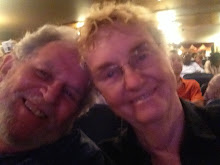Guam and Saipan, CNMI lay within the new Mariana Trench, Pacific Remote Islands and Rose Atoll Marine National Monument Park that was created earlier this year. The area encompasses 195,280 square miles of high seas that will be barred from fishing, mining and other uses. The Mariana Trench is the deepest known part of the world’s ocean, and the lowest elevation of the surface of the Earth.

Unlike the Federated States of Micronesia, or the Republics of Palau and the Marshall Islands, Guam and CNMI are not islands independent of the United States. Guam is a US territory and CNMI is a Commonwealth. And like Hawai‘i’s Waikiki beach, Guam and Saipan each have their own string of large hotels, shopping malls, internationally franchised restaurants, (e.g., Outback Steakhouse, Tony Roma’s, etc.). Some say that Guam’s Tumon Bay area is trying to be a little Waikiki, and Saipan’s Micro Beach area is trying to be a little Tumon Bay! Both islands are commercialized, dotted with suburban developments that seem to emerge overnight out of the jungles. They are much more like Hawai‘i than they are the Marshall Islands, or the FSM, or Palau.
We flew from Yap to Saipan with a change of planes on Guam, where we had time for a hot latté and sticky bun in the departure area of the Guam airport that thrives from 5 am to 8 am every morning, probably its busiest time of the day. The flight from Guam to Saipan is a short one, 45 minutes, but the plane passes over the small but historic island of Tinian. It was from Tinian that the B-29 Super Fortress bombers were launched that dropped the atom bombs on Japan at the end of the Second World War. The picture below shows the runway on Tinian, now unused, but nevertheless a reminder of more violent times in this region of the Pacific.

We landed on Saipan at 8 am, pretty beat after what seemed like an all night trip from Yap. We headed for the hotel we’ve stayed at many times, a suite hotel on the beach. That’s Sandra taking a short stroll on the beach prior to us crashing for 4 hours before we had to be at our afternoon meeting with the school superintendent and her staff.

Not being able to sleep very well, we were up in plenty of time to have lunch—a new Vietnamese restaurant that was great where Sandy had his usual pork chops—so decided to take a drive to the north end of the island. There we saw once again, as we have a few times before, the majestic and spiritual Suicide Cliffs, the site of a massive suicide by Japanese families at the conclusion of the Allied invasion of Saipan. The picture below is of the cliffs.

Though the Allied forces attempted to tell, by dropping leaflets over the island, the Japanese residents they would not be harmed, these peoples had been convinced that they would be subjected to severe torture and killings. Acting honorably by Japanese tradition and teachings, they decided to jump ‘in mass’ from Suicide Cliff. Some 5000 people died in one day! Since the war, many countries, including Japan, Korea, the USA, among others, have created memorials at the base of the cliffs to honor those who lost their lives that day. Some of the memorials are shown below along the ridge of Banzai Peace Memorial Cliff, which is a flat area of land below Suicide Cliff, but which itself is on the edge of the ocean. For those interested, James Bradley has written a compelling description of the end of WWII in the Western Pacific including the battle on Palau at Peleliu and the taking of Saipan island. The book titled, Flyboys, explains the mind-set of the Japanese people on Saipan that led to their mass suicide.

Then it was time to head for our meeting with the school folks. Education on Saipan is thriving even though under severe economic constraints. The leadership of the system is dynamic and forward looking, and makes use of the skills and experiences of school personnel to guide the system forward. One small example of such leadership can be found in the high school on the southern end of Saipan that includes art studios with 4 kilns, a full band room for its orchestra that has played internationally, and of course Sandy’s favorite, the math classroom equipped with computers that are using the latest software to teach geometry—see below.

The teacher in the picture was the school principal, but he is now an Assistant Superintendent of the entire system brought to the central office to make use of his creative talents by applying those to schools island wide.
At the end of this long day, we flew back to Guam where we stayed over night prior to taking the 7 am flight to Honolulu, a seven and a half hour trip to the east that crosses 4 time zones and the International Date Line. We left Guam on Saturday morning, and got to Honolulu, Friday evening of the day before! Oh well, that means we get to sleep through two Friday nights in one week!
But before we could take that flight, we must talk about Guam since we had previously spent a full day there as we passed from Chuuk through to Palau. So we thought we’d end this Blog with our impressions and experiences of Guam.
Postscript: Subsequent to the preparation and placing of this posting on the Blog, a lone gunman on Saipan killed four people including two children in a seemingly random act of violence. The shooter then drove to the Banzai Peace Memorial where he fatally shot himself.

As always an excellent posting.The
ReplyDeleteway you write is awesome.Thanks. Adding more information will be more useful.
Bathmate